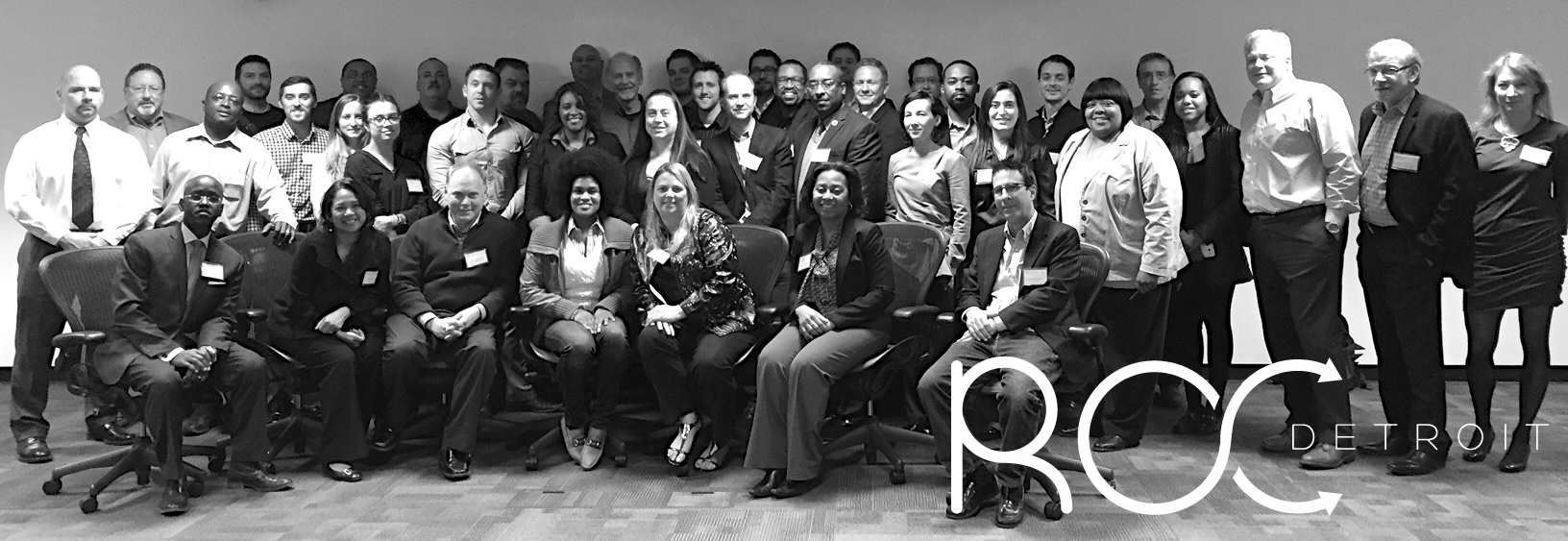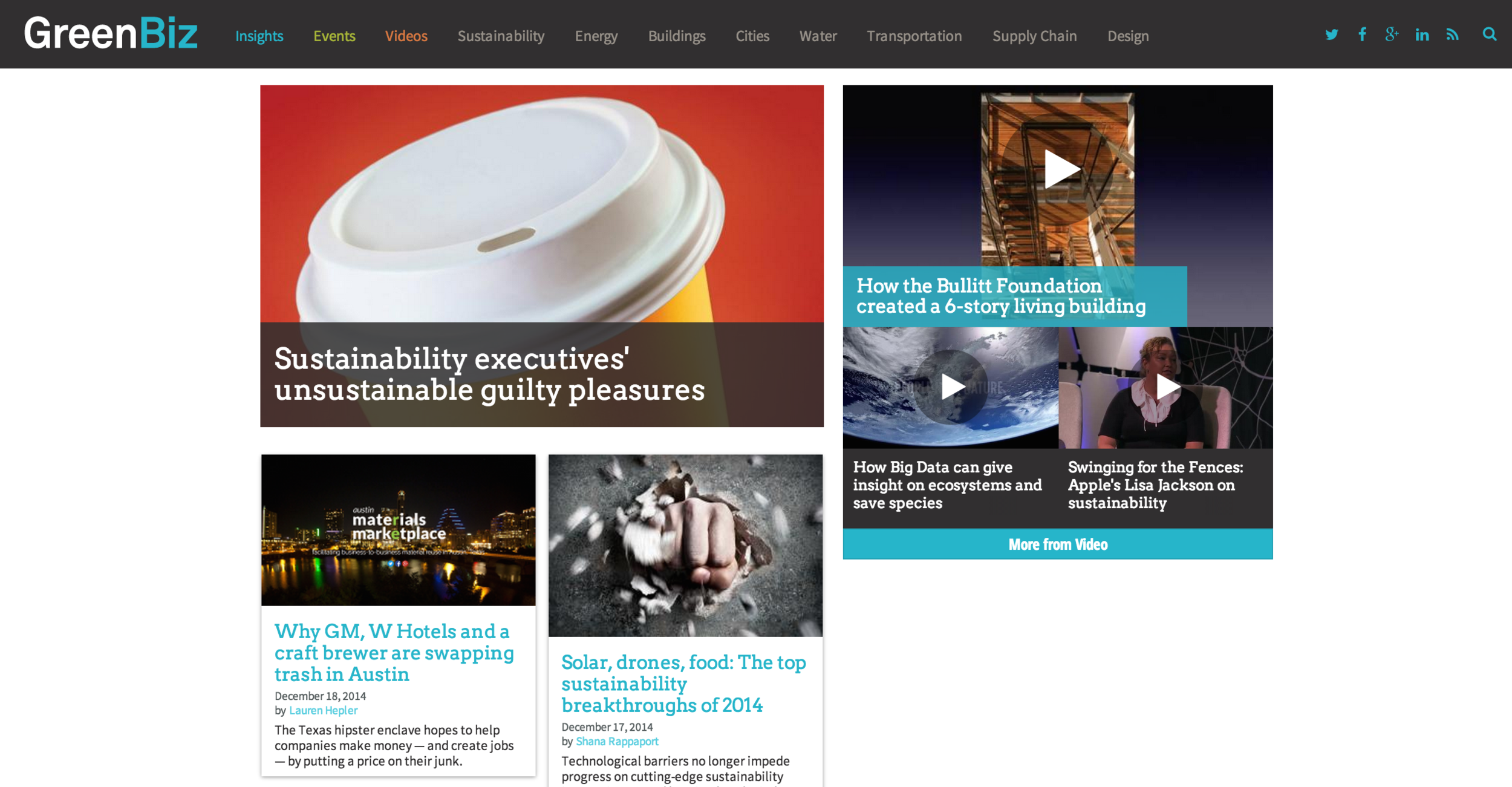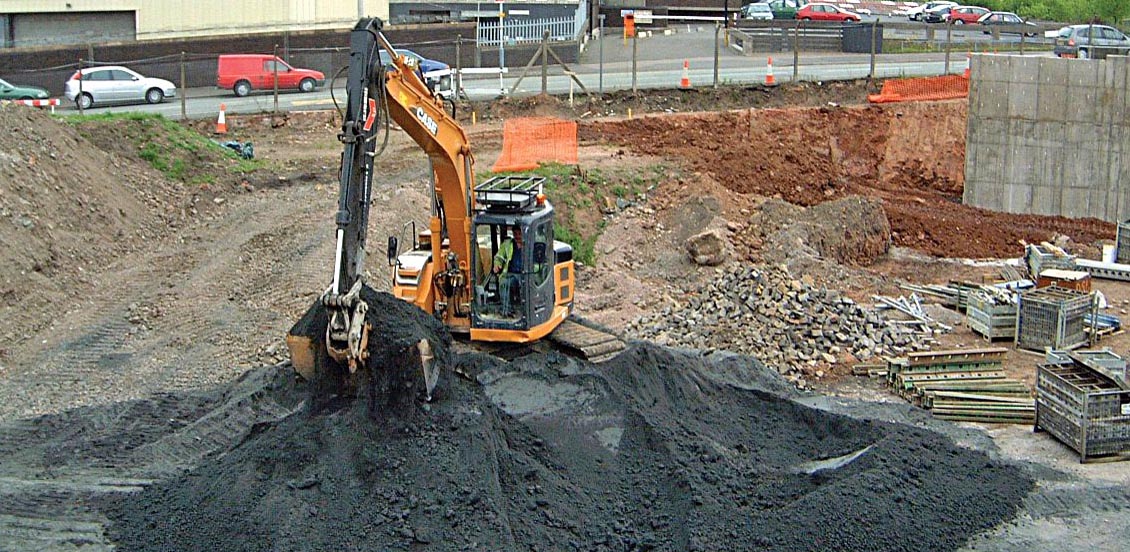The US BCSD's Austin Materials Marketplace program has climbed to over 60 participating businesses and organizations in the last nine months. And through the program, these participants have engaged in nearly 20 trades, keeping a considerable amount of valuable material out of the landfill.
 Visit http://austinmaterialsmarketplace.org to follow our progress.
Visit http://austinmaterialsmarketplace.org to follow our progress.
 DETROIT, MICHIGAN - General Motors, ROC Detroit project champion and US BCSD member, is repurposing Chevy Volt battery covers into Scaly-sided merganser nest boxes. The Scaly-sided merganser is endangered, and General Motors is working through the US BCSD and Wetlands International to help these beautiful waterfowl. John Bradburn, chairman of the US BCSD Executive Committee, designed and built the boxes after discussing the requirements with Wetlands International. John based his design on similar nest boxes built for the North American Wood Duck, however the size is scaled up to nearly three feet tall since the Scaly-sided merganser is larger. 10 boxes have been sent to China so far.
DETROIT, MICHIGAN - General Motors, ROC Detroit project champion and US BCSD member, is repurposing Chevy Volt battery covers into Scaly-sided merganser nest boxes. The Scaly-sided merganser is endangered, and General Motors is working through the US BCSD and Wetlands International to help these beautiful waterfowl. John Bradburn, chairman of the US BCSD Executive Committee, designed and built the boxes after discussing the requirements with Wetlands International. John based his design on similar nest boxes built for the North American Wood Duck, however the size is scaled up to nearly three feet tall since the Scaly-sided merganser is larger. 10 boxes have been sent to China so far.
Let’s make materials management a recognized and rewarded carbon reduction strategy of the proposed UN Climate Change Agreement
By Andrew Mangan, US BCSD and Marian Chertow, Yale University
Modern society has an intense thirst for physical resources to meet daily human needs, wants, and desires, which, in turn, is supported by the businesses and industries that collectively service these requests. The processes that provide physical resources generate significant quantities of waste at every step of the way, exposing us all to vast environmental, energy, and resource availability challenges. Once again much of the world is focusing on global climate with the upcoming meetings in 2015 in Paris following another year of bewildering weather and readily apparent land change. Years of research have shown that waste reduction is repeatedly associated with lowering greenhouse gases (GHGs) that exacerbate climate change. It is time we recognize the good actors and reward them by making waste reduction a recognized carbon reduction strategy in the upcoming UN climate negotiations.
While waste and materials management have not been on the front line of climate solutions, current emphasis on lifecycle approaches reveals that it is time to reconsider their role. If we break the climate problem down into different economic sectors, we see that energy and transport are nearly 2/3 of where GHG emissions originate – based primarily on fossil fuels burned to generate electricity and also to power vehicles (Figure 1). Yet, a recent US EPA report suggests that we slice the pie chart a bit differently to increase understanding of what EPA now calls “materials management” described as “serving human needs by using and reusing resources most productively and sustainably throughout their lifecycles.” (source) From a materials management perspective, the second chart below, based on a systems rather than sectoral approach, becomes quite relevant (Figure 2). As seen here, materials management systems for providing food and other goods accounts for 42% of GHG emissions. This figure embraces a lifecycle perspective that considers the extraction of natural resources, production, transport and disposal of food and other goods.
Source: US EPA 2009. Opportunities to Reduce Greenhouse Gas. Emissions through Materials and Land Management Practices
Great work is going on in industry toward materials management that not only creates new revenues and saves on landfill, but also reduces climate impacts when virgin materials can be avoided and efficiency can be increased. Some interesting ways that industries we work with are having success fall into three categories: internal reuse and recycling within a firm or facility, online material trading with other firms, and trading across unrelated facilities in the same geographical area. These are discussed below:
- Trading across unrelated facilities in the same geographical area – While geographic concentrations of industry are often heavy generators of GHGs associated with global climate change, impacts can be modulated through collaborative approaches. Emerging from industrial ecology is the notion of “industrial symbiosis” - where a cluster of geographically proximate firms exchange material by-products, energy, and water in a mutually beneficial manner such that waste from one industrial process becomes the feedstock for another. Through such systems, transportation costs and emissions are minimized and materials and energy already embedded in products is conserved, enabling GHG emissions to be greatly reduced at the industrial scale. For example, in Austin, Texas, the Austin Materials Marketplace is bringing together businesses of all sizes and entrepreneurs in the City of Austin and Travis County to create closed-loop systems in which one company’s waste is another company’s raw material. Other networked clusters have been found across the world from the mineral processing region in Kwinana, Australia to China’s enormous Tianjin Economic –Technological Development Area to Kalundborg Denmark, and the industrial cluster of Ulsan, Korea. And the Reuse Opportunity Collaboratory began in Detroit, Michigan, USA to bring together urban entrepreneurs and community economic development organizations to find ways of reusing materials such as deconstructing old buildings rather than demolishing them to repurpose resources for alley repaving and to construct new sidewalks.
-
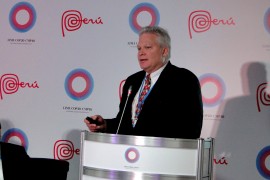
Internal reuse and recycling within a firm or facility – In addition to traditional materials management that has gone on as long as there has been industry, the US Business Council for Sustainable Development is seeing an upsurge in members paying careful attention to by-product reuse. General Motors and Nike, for example, both operate with the mindset that waste is merely a resource out of place, and both have set billion dollar goals based on material reuse. They emphasize improving material yields, reusing remaining scrap in a closed loop back into their own products and maximizing recycling of the rest.
- Online materials trading – old fashioned “waste exchanges” once served the purpose of letting one firm know that another had a discarded resource to offer for sale. Today most of this happens on line and systems are getting more sophisticated. An outpouring of interest at the business organization level this year indicates that this collaborative big data approach may be getting ready for primetime. This summer, the US BCSD joined with companies from the Corporate Eco Forum in launching a new online Materials Marketplace aimed at scaling reuse across hundreds or potentially thousands of companies. In November, the World Business Council for Sustainable Development expressed its interest in the marketplace through its newly formed Safe and Sustainable Materials Cluster. The new software takes advantage of user-centric design and standardized and accessible data templates, to make it possible for companies to share information about the materials flowing through their operations in a confidential, safe environment. Having access to this kind of information has led to material reuse opportunities such as reusing fibrous wastes in ceiling tiles, waste heat from cement kilns drying brewery grain for bricking and shipping; and converting ephemeral packaging products into a range of cascading product forms as companies recognize there is value in what they used to think of as waste.
Recognizing and rewarding the climate benefits of material reuse is needed now to provide a positive path for decarbonized economic progress. Characterizing the values, both direct life cycle benefits and broader societal advancements, achievable through this frugal, inclusive approach will be necessary. But related systems exist and can be applied, tailored for materials management. Devising such a system is not a simple matter and would take a ramp up in our understanding of GHG accounting and the most recent climate models. This move would also require taking on the types of issues that have been difficult to resolve with, for example, the Clean Development Mechanism regarding additionality – so that waste managers would not be rewarded for “business as usual” but rather for innovative development. By adopting materials management as a core strategy of the climate agreement, governments will be empowering companies, communities and countries to move toward a more circular economy where wastes become resources that can be used over and over again as they are in the natural world. At the same time, adopting rewards for carbon reductions in materials management would bring a whole new community into the realm of climate solutions.
Andrew Mangan is Co-Founder and Executive Director of the United States Business Council for Sustainable Development and Marian Chertow is Associate Professor of Industrial Environmental Management at the Yale School of Forestry & Environmental Studies.
We've been especially busy over the last few weeks with our project in Austin - the Austin Materials Marketplace. We're currently up to 27 participating businesses and organizations, ranging from large corporations like 3M and Spansion, down to local nonprofits like Any Baby Can. On 11/12, we hosted a live Google Hangout to look specifically at brewery by-products and waste, and talk about some good reuse solutions we're itching to help facilitate in Austin. Watch the recording below, and get in touch with us if it inspires any creative thinking.
And on 11/14 we hosted a medical devices-specific Google Hangout on how to transform medical device manufacturing waste into product. We discussed current industry best practices, some of our biggest waste challenges, and chatted about some interesting potential reuse opportunities. Watch below or click the Youtube link.
LANSING, Mich. – Pure Michigan Business Connect is partnering with General Motors, the Detroit Economic Growth Corporation, CXCatalysts, and the U.S. Business Council for Sustainable Development to launch the Reuse Opportunity Collaboratory (ROC) initiative on September 30 in Detroit. The event will bring together Michigan industries, institutions, small and medium sized businesses, and entrepreneurs to develop zero-waste partnerships in which one organization’s waste becomes another’s raw material.
“ROC Detroit is a groundbreaking effort to support sustainable manufacturing while growing Michigan’s economy and creating jobs,” said Michigan Economic Development Corporation President and CEO Michael A. Finney. “The ROC Detroit summit will help Michigan’s small and growing companies connect with General Motors and other partner companies’ waste management officials to find ways to reuse waste byproduct materials to their fullest potential.”
The ROC-Detroit launch matchmaking summit, taking place at the GM Renaissance Center, will give participating businesses the opportunity to be matched to ROC partner companies centered on procurement or partnership prospects for byproduct materials reuse. The partner companies include Aevitas Specialty Services Corporation, Alpha Resins, DOW Materials, General Motors, Marathon Petroleum, and Walker-Miller Energy. Participating suppliers may include any manufacturing-based company or waste management company interested in zero-waste production, including energy companies, manufacturers, and waste reduction and recycling businesses.
“General Motors is enthusiastic about this partnership because we believe that waste is simply a resource out of place,” said John Bradburn, GM global manager of waste reduction. “This event will create by-product synergies by repurposing one company’s trash into another’s primary resource.”
The by-product materials needs and application information can be viewed at http://www.puremichiganb2b.com/b2b-web/#roc.
Michigan companies interested in attending must complete the online application and identify their qualifications based on the needs listed. After each application is reviewed, invitations will be sent to companies whose intended purposes best match the available resources. Each invited company will have a private meeting to discuss potential opportunities with one of the procurement teams present at the summit.
The priority application deadline is Sept. 16, 2014. All applicants will be notified by Sept. 23 regarding participation eligibility. Applications received after the deadline will be considered if there are needs that have not been filled by the initial applicants.
Launched in 2011, Pure Michigan Business Connect is a public-private alliance of the Michigan Economic Development Corporation, state agencies and major Michigan companies and organizations that connects in-state companies to business resources. Companies can find new ways to raise capital, get access to professional business services at little or no cost, connect with each other through a new business-to-business network, and identify potential supplier opportunities, while developing resources to improve their supply chains.
Businesses and entrepreneurs in Austin and Travis County now have a new resource to help find uses for unwanted materials. The US Business Council for Sustainable Development (US BCSD), Ecology Action of Texas, and Austin Resource Recovery today announced the launch of the Austin Materials Marketplace, an initiative in which one company’s waste becomes another company’s raw material. The new public-private partnership aims to reduce waste going to landfills by connecting businesses that generate unwanted materials with businesses that can use those materials.
“We are excited to introduce this resource to the Austin business community so that today’s waste products can become tomorrow’s new revenue source,” said Bob Gedert, director of Austin Resource Recovery. “The launch of the Austin Materials Marketplace is an important step toward achieving Austin’s Zero Waste goal.”
Since 1995, US BCSD has successfully implemented similar business-to-business material reuse projects in Houston, Chicago, Columbus, Seattle, Kansas City and Mobile, as well as the United Kingdom and China.
“Core to our approach is use of a regularly monitored online database and structured network meetings facilitated by technical experts that help companies understand each other’s material flows and identify materials matches,” said Andrew Mangan, executive director of the US BCSD. “This collaboration stimulates innovative and business-friendly solutions. As a 21-year member of the Austin business community, the US BCSD is excited to bring our work home to Austin,” he added.
The business council has teamed up with Austin-based Ecology Action of Texas on this project, a non-profit organization with significant experience in the Austin recycling community.
”Ecology Action is thrilled to be a part of bringing the practices and principles of landfill diversion that we have developed over the last 44 years into the mainstream of the Austin business community and business culture. This project is an incredibly significant milestone in our community’s path towards Zero Waste,” said Joaquin Mariel, executive director of Ecology Action.
Businesses and organizations interested in the program are encouraged to attend next week’s information session on the marketplace:
Austin Materials Marketplace Information Session Where: Big Medium, Canopy Gallery, 916 Springdale Rd, Austin, Texas 78702 When: August 19th, 5:30pm-8:30pm What: Introductory social event with a short presentation of the project, networking opportunities, and food and beverages.
For more information, visit http://austinmaterialsmarketplace.org.
_______
The US Business Council for Sustainable Development is a member-led nonprofit business association that harnesses the power of collaborative regional projects to develop, deploy, and scale sustainable solutions to materials, water, energy, and ecosystem challenges. It is based in Austin, Texas, and has projects located throughout the U.S.
Ecology Action of Texas is an Austin company with more than 40 years of experience in resource recovery operations, landfill diversion, advocacy, and zero waste education. EA has operated a recycling/hard-to-recycle/reuse drop-off center in partnership with the City of Austin for 15 years.
Austin Resource Recovery provides a wide range of services designed to transform waste into resources while keeping our community clean. Services include curbside collection of recycling, trash, yard trimmings and large brush and bulk items; street sweeping; dead animal collection; household hazardous waste disposal and recycling; and outreach and education. In December 2011, the Austin City Council approved the Austin Resource Recovery Master Plan, which is the City’s roadmap to Zero Waste. The City of Austin is committed to keeping at least 90 percent of discarded materials out of the landfill by 2040 or sooner.
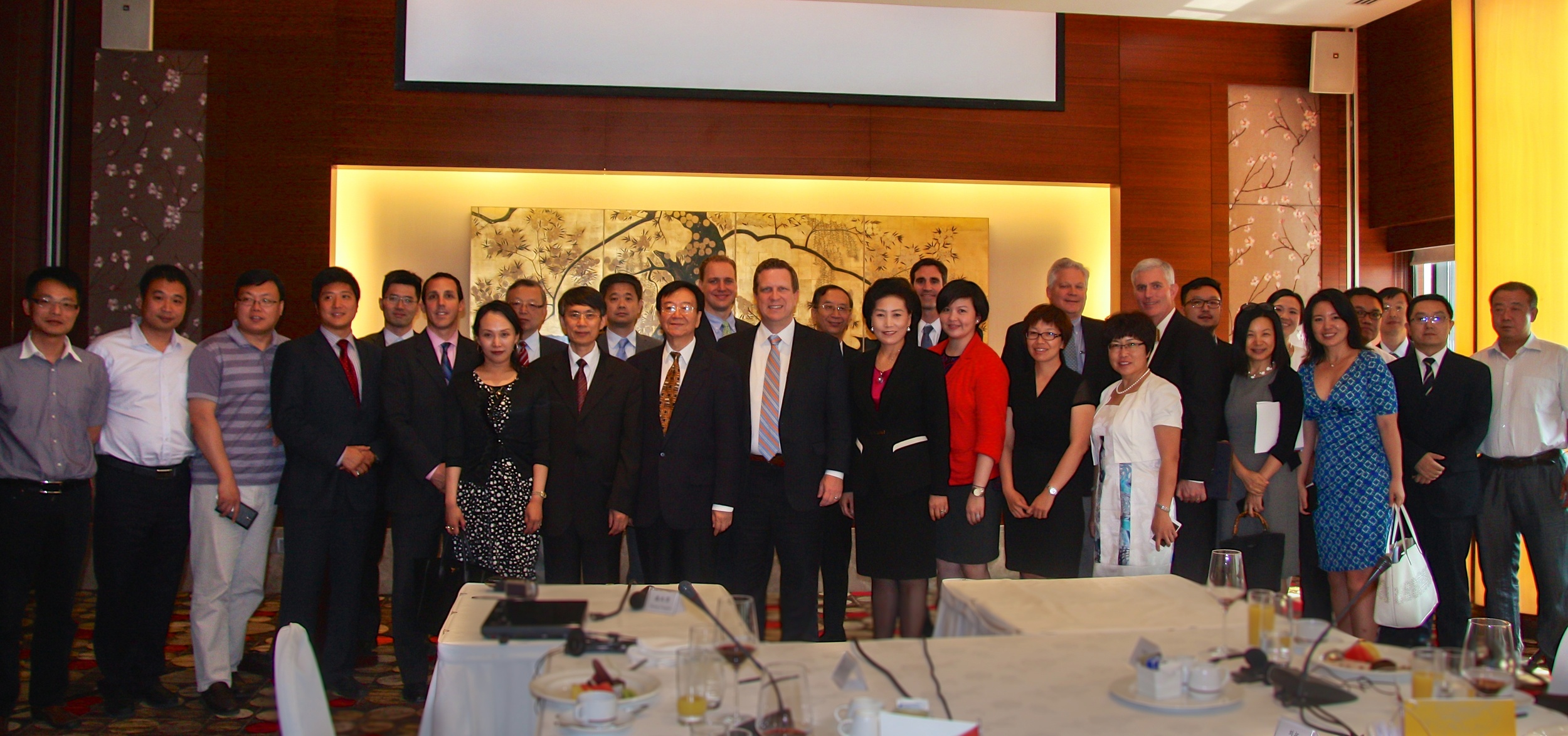 Andy Mangan, US BCSD Executive Director, is in Beijing this week reporting on outcomes from the Bohai By-Product Synergy Project. Special thanks to US BCSD members ConocoPhillips, Holcim, Alcoa, and GM; representatives from the US DOE, LBNL, Yale, NDRC, and MIIT; and our project partner the China Business Council for Sustainable Development.
Andy Mangan, US BCSD Executive Director, is in Beijing this week reporting on outcomes from the Bohai By-Product Synergy Project. Special thanks to US BCSD members ConocoPhillips, Holcim, Alcoa, and GM; representatives from the US DOE, LBNL, Yale, NDRC, and MIIT; and our project partner the China Business Council for Sustainable Development.
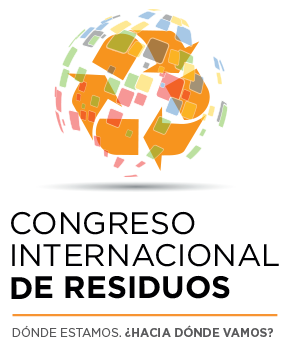 Andy Mangan, US BCSD Executive Director, was invited to speak about By-Product Synergy on April 25th at the first Congreso Internacional de Residuos (International Congress of Waste), held in Buenos Aires, Argentina. The global event was attended by representatives from Colombia, Costa Rica, Venezuela, United States, Brazil, Spain, Greece, Italy, England, Germany and France.
Andy Mangan, US BCSD Executive Director, was invited to speak about By-Product Synergy on April 25th at the first Congreso Internacional de Residuos (International Congress of Waste), held in Buenos Aires, Argentina. The global event was attended by representatives from Colombia, Costa Rica, Venezuela, United States, Brazil, Spain, Greece, Italy, England, Germany and France.
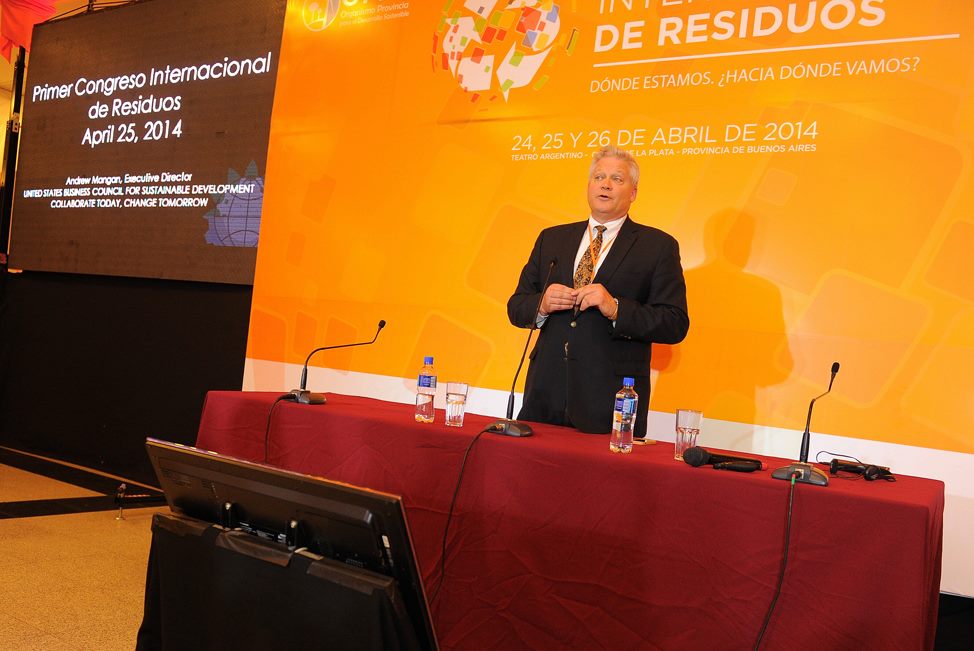
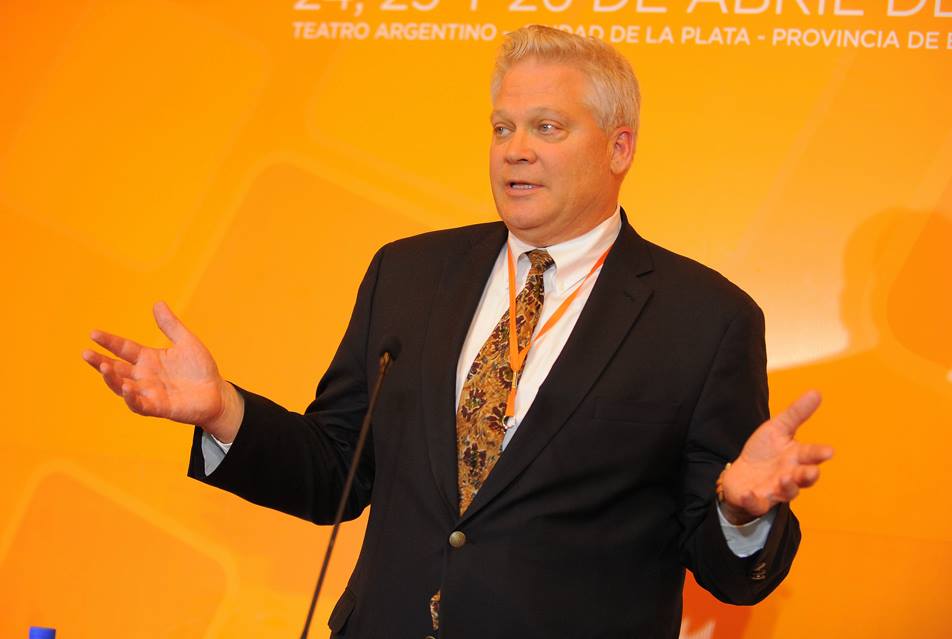
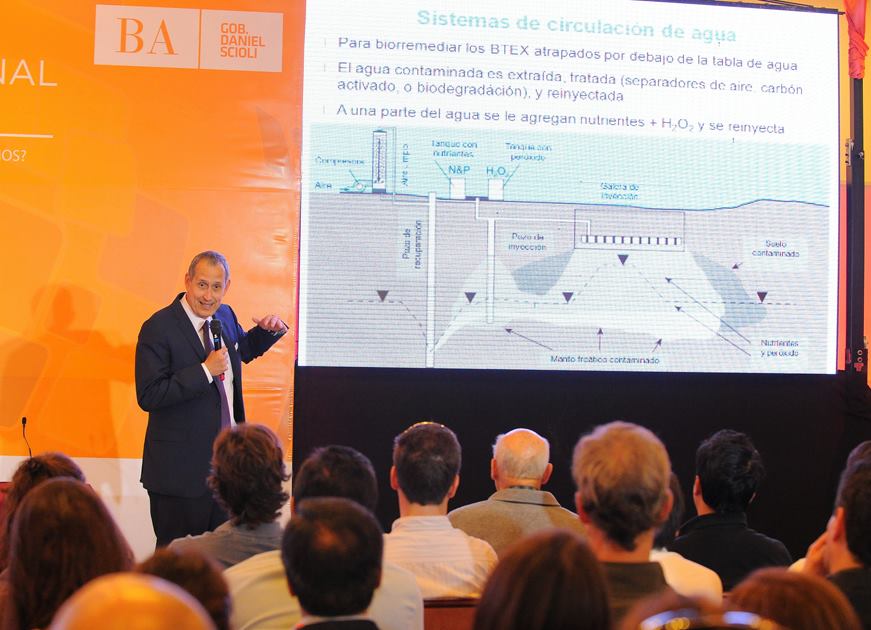
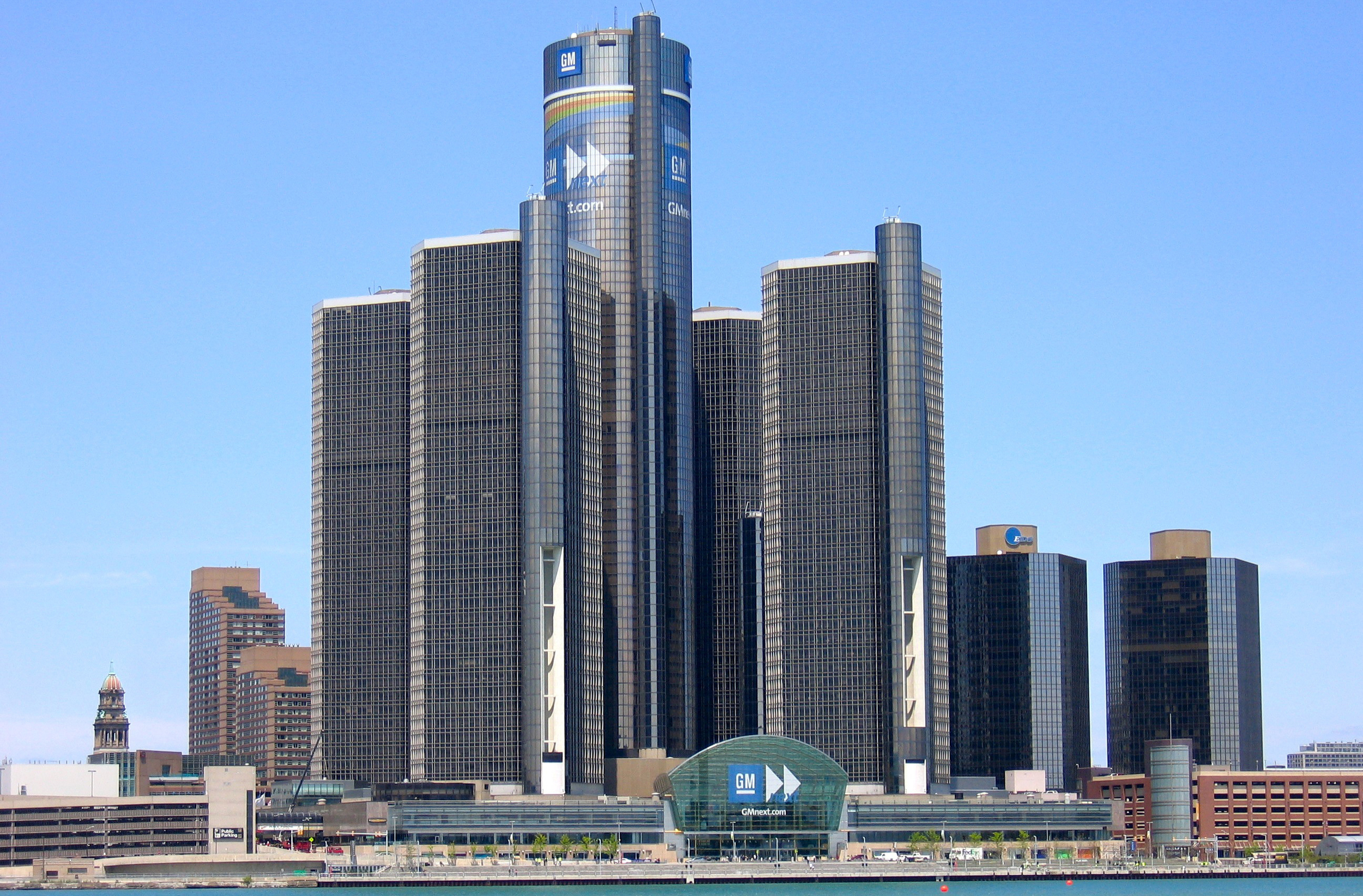 US BCSD Member General Motors' 110th Landfill-free property is a big one: 5.5 million square-feet, 12,000 office workers, 3,000 daily visitors, with a 73-floor hotel. The Renaissance Center in Detroit, Michigan is no longer sending any waste to the dump. The Detroit Free Press reports,
US BCSD Member General Motors' 110th Landfill-free property is a big one: 5.5 million square-feet, 12,000 office workers, 3,000 daily visitors, with a 73-floor hotel. The Renaissance Center in Detroit, Michigan is no longer sending any waste to the dump. The Detroit Free Press reports,
“From our CEO all the way across the organization, every single person plays a role in this project,” said John Bradburn, GM’s waste reduction manager and US BCSD Chairman. Purging waste from the RenCen bedeviled GM’s environmental sustainability officials for a time. For example, the hotel needed to find a way to address mattresses. The automaker collaborated with 11 other RenCen corporate tenants — including Blue Cross Blue Shield of Michigan — as well as 27 retailers and 20 restaurants. “It’s a very, very diverse site,” Bradburn said. “For us to get this done, we needed to get everybody’s buy-in — and we were very pleased to know when we sat down with the various retailers and businesses in there, they were very enthused about doing this.” (Source)
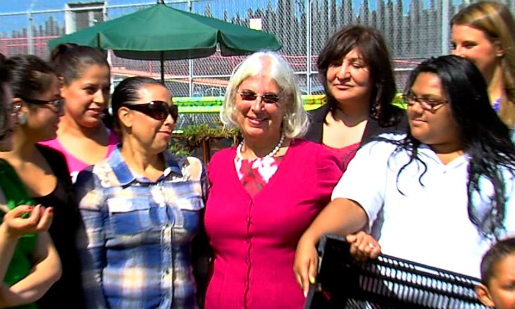 By-Product Synergy is useful to more than just the companies and organizations exchanging goods; in some cases, entire communities benefit. US BCSD member General Motors has brought its home city of Detroit into the BPS loop by donating its used shipping crates to Cadillac Urban Gardens. The community garden grows roughly 2,400 vegetables and herbs, which in turn are provided free of charge to area residents.
Source: http://detroit2020.com/2013/08/16/our-person-of-the-week-unifies-a-community-through-an-urban-garden/
By-Product Synergy is useful to more than just the companies and organizations exchanging goods; in some cases, entire communities benefit. US BCSD member General Motors has brought its home city of Detroit into the BPS loop by donating its used shipping crates to Cadillac Urban Gardens. The community garden grows roughly 2,400 vegetables and herbs, which in turn are provided free of charge to area residents.
Source: http://detroit2020.com/2013/08/16/our-person-of-the-week-unifies-a-community-through-an-urban-garden/
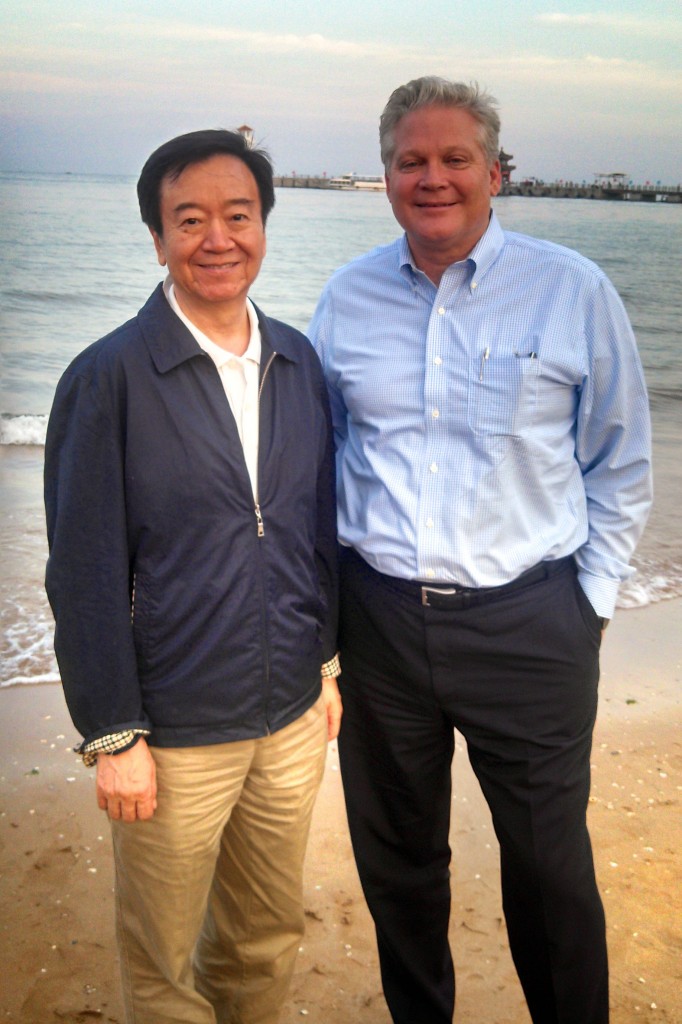 Andy Mangan, US BCSD Executive Director, is in China this week meeting with China Business Council for Sustainable Development staff, member companies, and government representatives working on the Hebei By-Product Synergy Project. Here's Andy alongside Mr. Zhai Qi, Secretary General of the CBCSD, at the shore in Qinghuangdao.
Andy will be traveling from Qinghuangdao to Ulsan, South Korea next week to attend the International Society for Industrial Ecology's biennial conference at the University of Ulsan. The city is one of the best examples of the amazing development of South Korea. It's is home to Hyundai (ship building and automobiles), the SK refinery and petrochemicals complex, and has a large and developing Eco-Industrial Park, which will be a model for industrial symbiosis around the world.
Andy Mangan, US BCSD Executive Director, is in China this week meeting with China Business Council for Sustainable Development staff, member companies, and government representatives working on the Hebei By-Product Synergy Project. Here's Andy alongside Mr. Zhai Qi, Secretary General of the CBCSD, at the shore in Qinghuangdao.
Andy will be traveling from Qinghuangdao to Ulsan, South Korea next week to attend the International Society for Industrial Ecology's biennial conference at the University of Ulsan. The city is one of the best examples of the amazing development of South Korea. It's is home to Hyundai (ship building and automobiles), the SK refinery and petrochemicals complex, and has a large and developing Eco-Industrial Park, which will be a model for industrial symbiosis around the world.
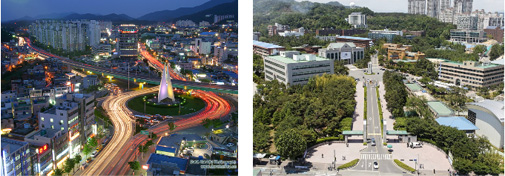
Joining us for Action 2020 at Yale University on July 17-18, 2013?
Actions led by business to achieve one or more societal or planetary goal in the Action 2020 framework will be assisted and scaled up through collaboration with industry peers, academic experts, and government representatives. Action 2020 organizers at the Yale Center for Business and Environment have assembled an esteemed group of colleagues to join us at Yale University, each committed to helping us understand the complexities of our efforts and continue driving to action. See a few standouts below, and visit our website to learn more.
Paul Anastas
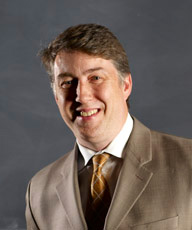 Paul T. Anastas is the Teresa and H. John Heinz III Professor in the Practice of Chemistry for the Environment. He has appointments in the School of Forestry and Environmental Studies, Department of Chemistry, and Department of Chemical Engineering. In addition, Prof. Anastas serves as the Director of the Center for Green Chemistry and Green Engineering at Yale.
Paul T. Anastas is the Teresa and H. John Heinz III Professor in the Practice of Chemistry for the Environment. He has appointments in the School of Forestry and Environmental Studies, Department of Chemistry, and Department of Chemical Engineering. In addition, Prof. Anastas serves as the Director of the Center for Green Chemistry and Green Engineering at Yale.
Anastas took public service leave from Yale to serve as the Assistant Administrator for the US Environmental Protection Agency and the Agency Science Advisor from 2009-2012. From 2004 -2006, Paul Anastas served as Director of the ACS Green Chemistry Institute in Washington, D.C. He was previously the Assistant Director for the Environment in the White House Office of Science and Technology Policy where he worked from 1999-2004. He is credited with establishing the field of green chemistry during his time working for the U.S. Environmental Protection Agency as the Chief of the Industrial Chemistry Branch and as the Director of the U.S. Green Chemistry Program.
John Bradburn
 John is manager of waste-reduction efforts at General Motors. In this role, he leads the company's landfill-free initiative, which has resulted in 99 GM operations around the world that reuse, recycle, and convert to energy all wastes from daily operations. John is an established expert in waste reduction and recycling, and frequently mentors other companies pursuing zero-waste goals. John's responsibilities also include directing the company's design-for-the-environment program, implementing sustainable processes and technologies that reduce the company's environmental impact and costs.
John is manager of waste-reduction efforts at General Motors. In this role, he leads the company's landfill-free initiative, which has resulted in 99 GM operations around the world that reuse, recycle, and convert to energy all wastes from daily operations. John is an established expert in waste reduction and recycling, and frequently mentors other companies pursuing zero-waste goals. John's responsibilities also include directing the company's design-for-the-environment program, implementing sustainable processes and technologies that reduce the company's environmental impact and costs.
He collaborates with suppliers, product and manufacturing engineers, and external stakeholder groups. Under John's leadership, GM recycled or reused 90 percent of waste generated globally through various resource conservation efforts in 2011. Between 2000 and 2010, the company reduced non-recycled manufacturing waste by 73 percent.
Marian Chertow
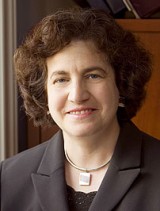 Marian Chertow is Associate Professor of Industrial Environmental Management and has been Director of the Industrial Environmental Management Program at the Yale School of Forestry and Environmental Studies since 1991. Her research and teaching focus on industrial ecology, business/environment issues, waste management, and environmental technology innovation. Primary research interests are 1) The study of industrial symbiosis including geographically-based exchanges of wastes, materials, energy, and water within networks of businesses. 2) The potential of industrial ecology to underpin ideas of the proposed Circular Economy law in China. 3) The application of innovation theory to the development of environmental and energy technology.
Marian Chertow is Associate Professor of Industrial Environmental Management and has been Director of the Industrial Environmental Management Program at the Yale School of Forestry and Environmental Studies since 1991. Her research and teaching focus on industrial ecology, business/environment issues, waste management, and environmental technology innovation. Primary research interests are 1) The study of industrial symbiosis including geographically-based exchanges of wastes, materials, energy, and water within networks of businesses. 2) The potential of industrial ecology to underpin ideas of the proposed Circular Economy law in China. 3) The application of innovation theory to the development of environmental and energy technology.
Prior to Yale, Marian spent ten years in environmental business and state and local government including service as President of the Connecticut Resources Recovery Authority charged with developing a billion dollar waste infrastructure system for the state. She is a frequent international lecturer and has testified on waste, recycling and other environmental issues before committees of the U.S. Senate and House of Representatives.
Richard Kidd
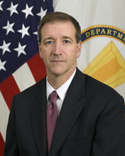 Richard Kidd became the Deputy Assistant Secretary of the Army (Energy & Sustainability) on October 25, 2010. This is his third assignment as a Senior Executive within the Federal Government. In this position he is responsible for overall program direction, establishment of policies, development and refinement of strategies, and oversight for implementation of all programs and initiatives related to Energy Security and Sustainability within the Army. As the Army's Senior Energy Executive, Mr. Kidd coordinates and integrates both installation and operational energy programs and strategies.
Richard Kidd became the Deputy Assistant Secretary of the Army (Energy & Sustainability) on October 25, 2010. This is his third assignment as a Senior Executive within the Federal Government. In this position he is responsible for overall program direction, establishment of policies, development and refinement of strategies, and oversight for implementation of all programs and initiatives related to Energy Security and Sustainability within the Army. As the Army's Senior Energy Executive, Mr. Kidd coordinates and integrates both installation and operational energy programs and strategies.
Mr. Kidd graduated from the United States Military Academy in 1986 and served as an Infantry Officer until 1991. After receiving a Masters Degree in Public and Private Management from Yale University, he joined the United Nations in 1993 and served in a variety of international assignments, principally in war affected regions of the world.
Anthony Leiserowitz
 Anthony Leiserowitz, Ph.D. is Director of the Yale Project on Climate Change Communication and a Research Scientist at the School of Forestry and Environmental Studies at Yale University. He is a widely recognized expert on American and international public opinion on global warming, including public perception of climate change risks, support and opposition for climate policies, and willingness to make individual behavioral change.
Anthony Leiserowitz, Ph.D. is Director of the Yale Project on Climate Change Communication and a Research Scientist at the School of Forestry and Environmental Studies at Yale University. He is a widely recognized expert on American and international public opinion on global warming, including public perception of climate change risks, support and opposition for climate policies, and willingness to make individual behavioral change.
His research investigates the psychological, cultural, political, and geographic factors that drive public environmental perception and behavior. He has conducted survey, experimental, and field research at scales ranging from the global to the local, including international studies, the United States, individual states, municipalities, and with the Inupiaq Eskimo of Northwest Alaska. He also conducted the first empirical assessment of worldwide public values, attitudes, and behaviors regarding global sustainability, including environmental protection, economic growth, and human development.
 The US BCSD, WBCSD, and deans and professors from Yale School of Management and the School of Forestry and Environmental Studies met last week to accelerate sustainable solutions through business education. This partnership opportunity aligns the WBCSD global business community, its Regional Network, and the Global Network for Advanced Management to pursue co-development of transformative business education, extensive research opportunities, and regional project collaboration.
The US BCSD, WBCSD, and deans and professors from Yale School of Management and the School of Forestry and Environmental Studies met last week to accelerate sustainable solutions through business education. This partnership opportunity aligns the WBCSD global business community, its Regional Network, and the Global Network for Advanced Management to pursue co-development of transformative business education, extensive research opportunities, and regional project collaboration.
In the complex world of scaling up business solutions to sustainability, top universities, particularly business and management schools, have a key role to play in educating the leaders of today and tomorrow. Partnership with the WBCSD provides access to senior executives of companies who are at the forefront of corporate sustainable innovation and practices, and equally important, access to its Regional Network which provides regionally specific insights on corporate sustainability project opportunities and barriers.
The Global Network for Advanced Management brings together 23 universities from 23 countries of varying regions, cultures, and economies in different phases of development. The coalition of universities work together on four key goal challenges, one of which is sustainability. Students from participating schools travel for a week of intensive study organized around a theme, company visits, and networking. Geographically, 20 of the 23 universities are located in countries with strong WBCSD Regional Network affiliates.
By partnering with a university consortium like the Global Network for Advanced Management that shares our sense of urgency on sustainability, we're providing our members with a groundbreaking new opportunity create innovative sustainability solutions and foster the appropriate framework conditions to bring them to scale.
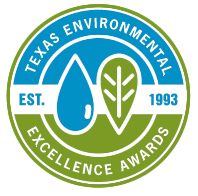 The US BCSD's Greater Houston By-Product Synergy (BPS) Project was honored as one of 19 finalists for a Texas Environmental Excellence Award (TEEA) at the Texas Commission for Environmental Quality (TCEQ) Awards Banquet on May 1, 2013. Susan Fernandes, the US BCSD's Project Manager, and Houston BPS Project member Joe Rizzo, Cherry Companies, attended the Awards Banquet. The finalists and 10 winners were selected from a field of more than 150 applications state-wide. The Houston BPS project was selected in the Innovative Operations/Management Award Category.
The concept of BPS is that one company’s waste can become another company’s resource. Matching by-product streams from one facility with users at another creates new revenues or savings, and potential social and environmental benefits. Since its inception three years ago, the Houston BPS project has identified more than 18,000 metric tons that can be diverted from landfill disposal, achieved an estimated annual savings of $4.5 million in waste disposal costs and virgin materials purchases, and a wide range of other life-cycle environmental benefits. Consider joining our diverse industrial network to bring these benefits to your company too. For more information, visit: http://houstonbps.org
The US BCSD's Greater Houston By-Product Synergy (BPS) Project was honored as one of 19 finalists for a Texas Environmental Excellence Award (TEEA) at the Texas Commission for Environmental Quality (TCEQ) Awards Banquet on May 1, 2013. Susan Fernandes, the US BCSD's Project Manager, and Houston BPS Project member Joe Rizzo, Cherry Companies, attended the Awards Banquet. The finalists and 10 winners were selected from a field of more than 150 applications state-wide. The Houston BPS project was selected in the Innovative Operations/Management Award Category.
The concept of BPS is that one company’s waste can become another company’s resource. Matching by-product streams from one facility with users at another creates new revenues or savings, and potential social and environmental benefits. Since its inception three years ago, the Houston BPS project has identified more than 18,000 metric tons that can be diverted from landfill disposal, achieved an estimated annual savings of $4.5 million in waste disposal costs and virgin materials purchases, and a wide range of other life-cycle environmental benefits. Consider joining our diverse industrial network to bring these benefits to your company too. For more information, visit: http://houstonbps.org
In May 2012, the US BCSD and the China Business Council for Sustainable Development (CBCSD) initiated a Hebei By-Product Synergy Project under the US-China Strategic Economic Dialogue’s EcoPartnership program. One year later, the project continues to gain momentum.
 The mayor's offices of Huainan and Qinhuangdao, as well as the Hebei provincial government, have all recently voiced their strong interest and support for the project in talks with CBCSD representatives. The project team is in the process of selecting two or three pilot industrial parks in Qinhuangdao City, Hebei Province and Huainan City, Anhui Province, to develop and test the implementation procedures, select the list of participating enterprises, draw lessons from domestic and international successful practices, and screen BPS technologies.
The mayor's offices of Huainan and Qinhuangdao, as well as the Hebei provincial government, have all recently voiced their strong interest and support for the project in talks with CBCSD representatives. The project team is in the process of selecting two or three pilot industrial parks in Qinhuangdao City, Hebei Province and Huainan City, Anhui Province, to develop and test the implementation procedures, select the list of participating enterprises, draw lessons from domestic and international successful practices, and screen BPS technologies.
To support the Hebei BPS project, the US BCSD is developing an online materials marketplace designed to facilitate and manage materials data and transactions for BPS projects. This marketplace will allow easy access to materials data, synergy knowledge, and potential resources available based on facility type and industry.
The BPS effort in Qinhuangdao City aligns with a National Science Foundation research project led by the Yale Center for Industrial Ecology entitled: Developing Low-Carbon Cities in the USA, China & India through Inter-Disciplinary Integration Across Engineering, Environmental Sciences, Social Sciences & Public Health. The project includes a focus on BPS as a short term intervention that would likely be beneficial both environmentally and economically, and is considered an important component of the NSF grant.
This project will produce cross-industry material reuse opportunities that ultimately bring a circular economy network to the Hebei region in China through the matching of wastes and under-valued resources at one facility with potential users at other facilities. For more information, visit: http://usbcsd.org/us-china-ecopartnership/
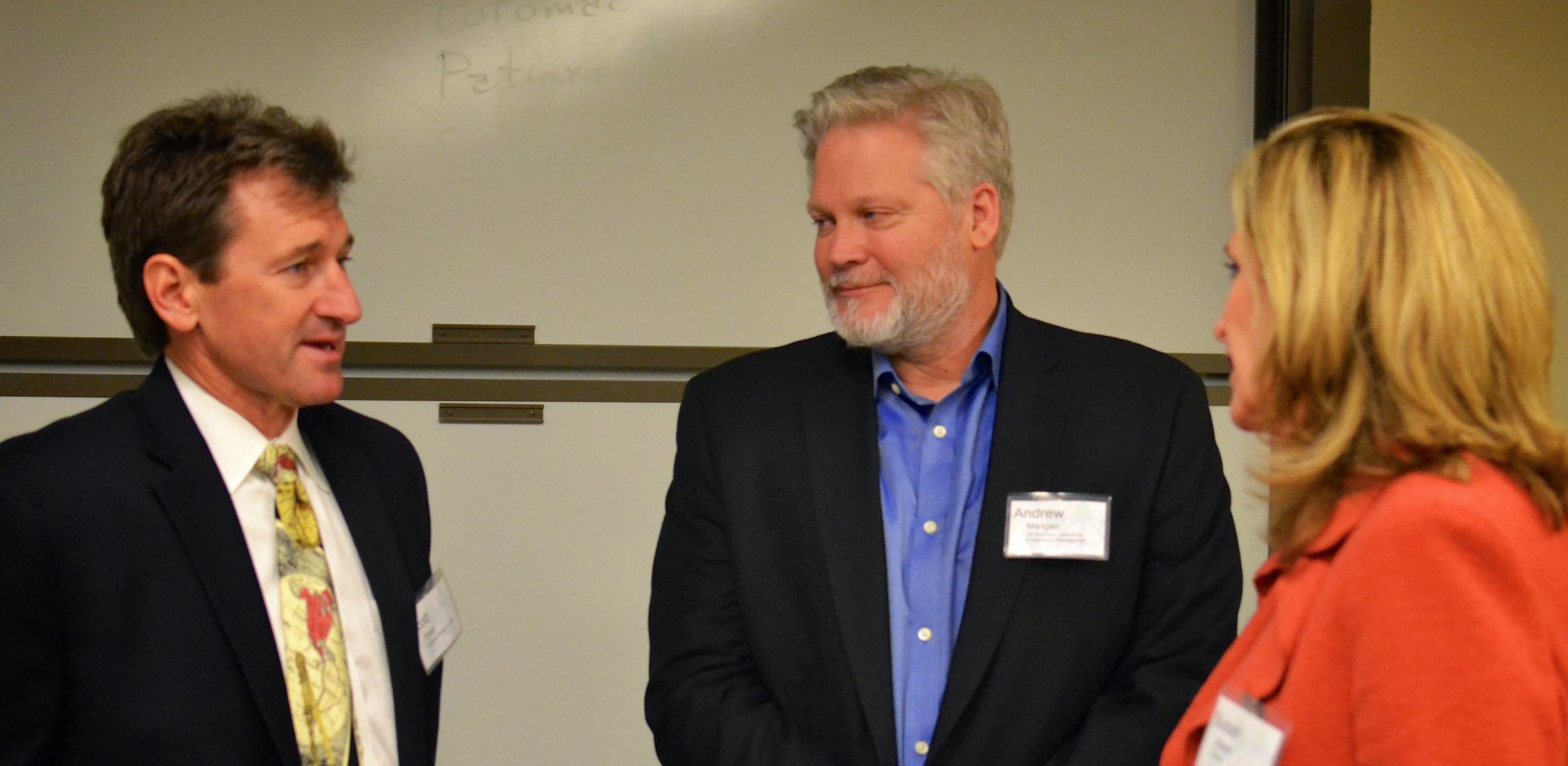 US BCSD members and other sustainability experts came from around the country to the University of Texas at Austin to grapple with the complexities of scaling up solutions to Vision 2050 through collaborative learning and real, actionable regional projects.
US BCSD members and other sustainability experts came from around the country to the University of Texas at Austin to grapple with the complexities of scaling up solutions to Vision 2050 through collaborative learning and real, actionable regional projects.
The US BCSD Winter Meeting was unique this year in its diverse assembly of participants, creating a rare opportunity for sustainability professionals from multiple industries to collaborate and learn alongside cutting edge researchers and federal, state and local policymakers. A number of highly actionable outcomes were created as a result.
The US Business Council for Sustainable Development (US BCSD) is soliciting Minority and Women-Owned Business Enterprise participation for the following City of Austin project. Solicitation documents are available at our office or at One Texas Center, 505 Barton Springs Road, 10th Floor, Suite 1045. Name of Project: Materials Exchange Project Solicitation Number: RFP 1500 SDC0008 Proposal Response Due Date and Time: Prior to 04/05/2013, 02:00 PM
The project includes the following scopes of work:
- Database technical support: troubleshooting, training for local users.
- Facilitation support: data collection and data entry support.
- Facilitation support: identifying generators (manufacturers, contractors, school, businesses, etc) and outreach for project participation.
- Facilitation support: matching materials available with potential users. Technical experience is required to understand engineering and chemistry of potential material matches.
- Facilitation support: identifying and maintaining list of haulers and transportation options/logistics.
- Facilitation support: preparation of case studies and fact sheets for successful synergies.
- Contact our office for detailed information on the scopes of services to be subcontracted and the relevant terms and conditions of the contract.
Please contact Susan Fernandes at 512.981.5417 or fernandes@usbcsd.org.
Your response MUST be submitted to us no later than 03/28/2013 at 5:00pm.
This project methodology is being introduced around the world. In May 2012, the US BCSD and the China Business Council for Sustainable Development initiated a BPS project in Hebei Province in northeast China. The Hebei BPS project is modeled after the US BCSD’s network of successful projects in regions across the United States and will address several objectives of China’s 12th Five-Year Plan. Those include a 16 percent reduction in energy use per unit of GDP, a 17 percent reduction of CO2 emissions per unit of GDP, and an 8 percent absolute reduction in sulfur dioxide and organic water pollutants. Three to four dozen Chinese companies will be invited to join this network and are expected to produce synergies valued at US$5 million to $10 million in new revenues, savings and investments in 2013.


